Time signatures are the two numbers you see at the beginning of a piece of sheet music. They can tell you a lot about a song’s rhythmic feel. And while most people are familiar with common time signatures like 4/4, 2/4, and 3/4, there are “weirder” time signatures like 5/4, 7/4, and 9/8 that create a very unique feel.
In this lesson, we’re lucky to have David Bennett explain seven common time signatures to us in detail. David is a popular YouTuber whose content on music theory has racked up millions of views. He’s great at making complex concepts accessible. Here’s David on time signatures!
Table of Contents:
Love more guides like this? Subscribe to The Note for more quick tips, cheat sheets, explainers, and other stuff piano players love.
By signing up you’ll also receive our ongoing free lessons and special offers. Don’t worry, we value your privacy and you can unsubscribe at any time.
No time to read? Here’s a quick cheat:
| Time Signature | Meaning |
|---|---|
| 4/4 | 4 beats per measure 1 quarter note = 1 beat |
| 3/4 | 3 beats per measure 1 quarter note = 1 beat |
| 5/4 | 5 beats per measure 1 quarter note = 1 beat |
| 7/4 | 7 beats per measure 1 quarter note = 1 beat |
| 6/8 | 6 beats per measure 1 eighth note = 1 beat |
| 9/8 | 9 beats per measure 1 eighth note = 1 beat |
| 15/8 | 15 beats per measure 1 eighth note = 1 beat |

There are two numbers in a time signature, one on top and one on the bottom. The top number tells us how many beats are in a measure, and the bottom number tells us what kind of note counts as one beat.
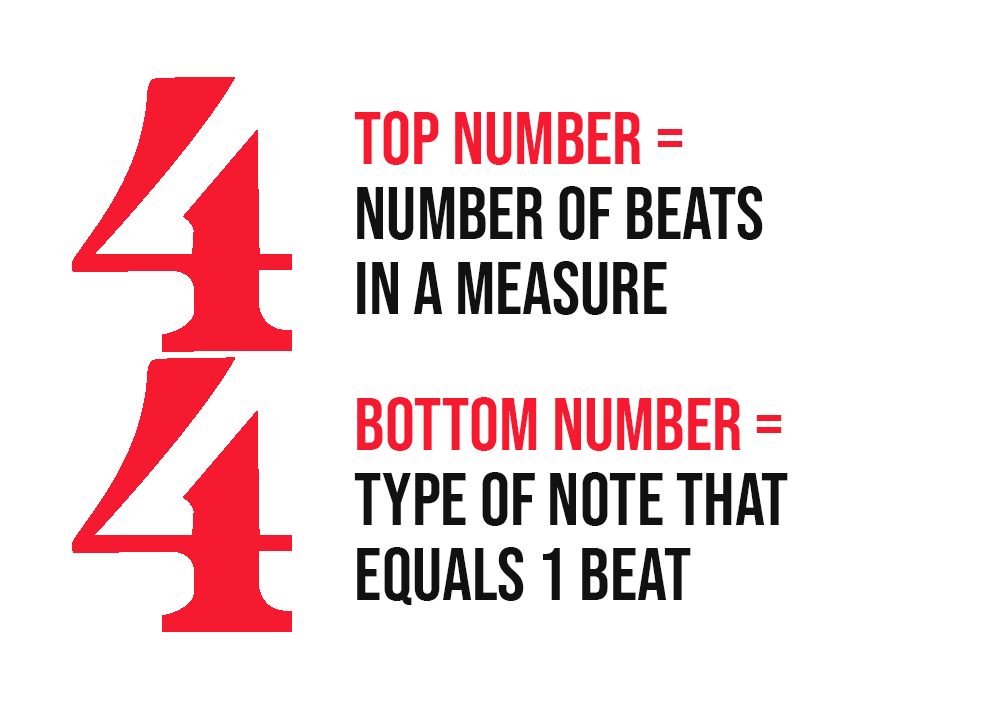
The most common time signatures are 4/4, otherwise known as common time. 2/4, 3/4, and 6/8 are also popular. 2/2 or cut time means two beats per measure, with one half note equalling one beat.
4 beats per measure, 1 quarter note = 1 beat
Song example: “Cruel Summer” by Taylor Swift
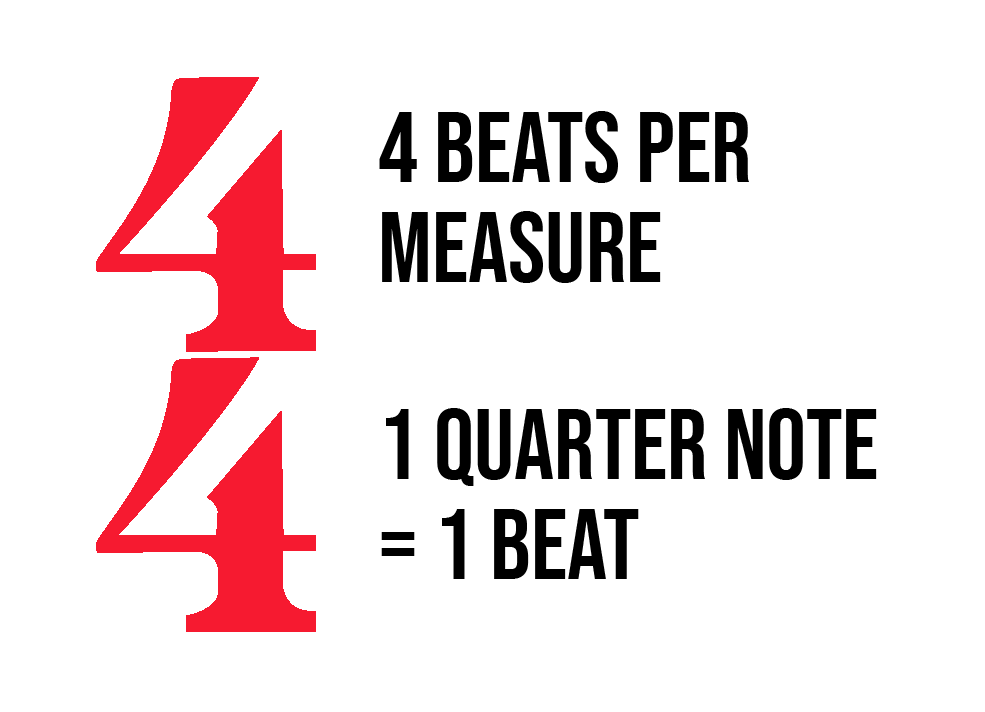
Most music is set in a 4/4 time signature, which is also known as “common time.” This means each measure has four beats and a quarter note is worth one unit of a beat. (The “4” on the bottom represents quarter notes.)
4/4 will feel 4/4 because there’s a sense of completeness after the four beats. 4/4 is a very balanced, symmetrical time signature that will feel comfortable and familiar to most listeners.
3 beats per measure, 1 quarter note = 1 beat
Song example: “The Blue Danube” by Johann Strauss II
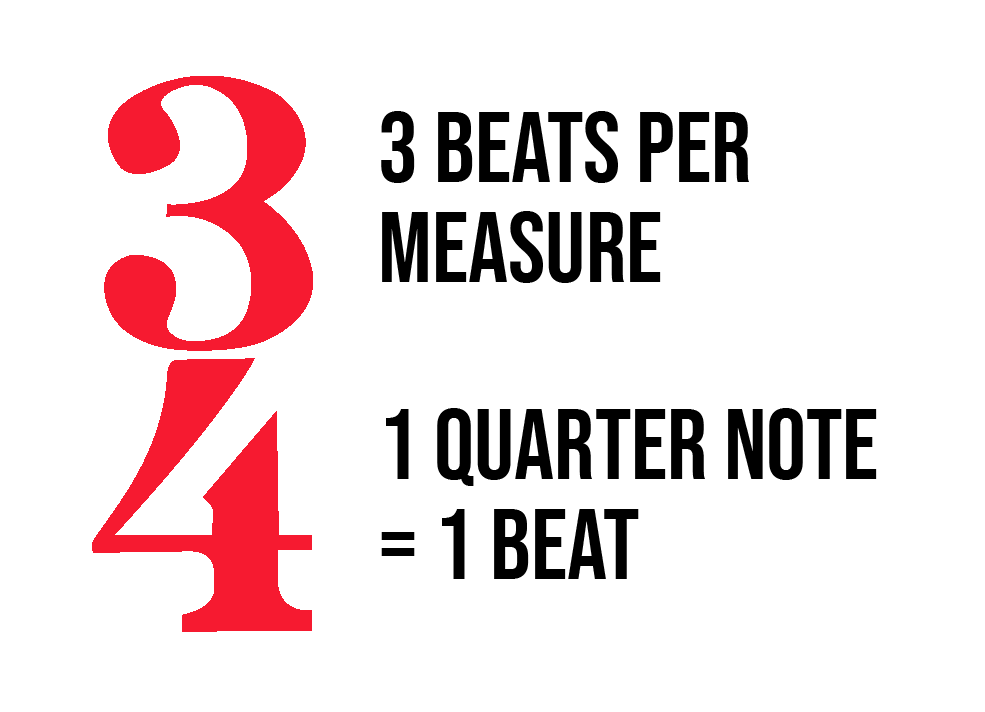
3/4 is the famous waltz rhythm. There’s a distinct oom-pah-pah feel to this time signature with an emphasis on the first downbeat.
Strauss’ “The Blue Danube” is probably the most famous 3/4 song of all time. But pop songs do use this meter, such as Paul McCartney’s “Mull of Kintyre.”
5 beats per measure, 1 quarter note = 1 beat
Song example: Mission Impossible theme
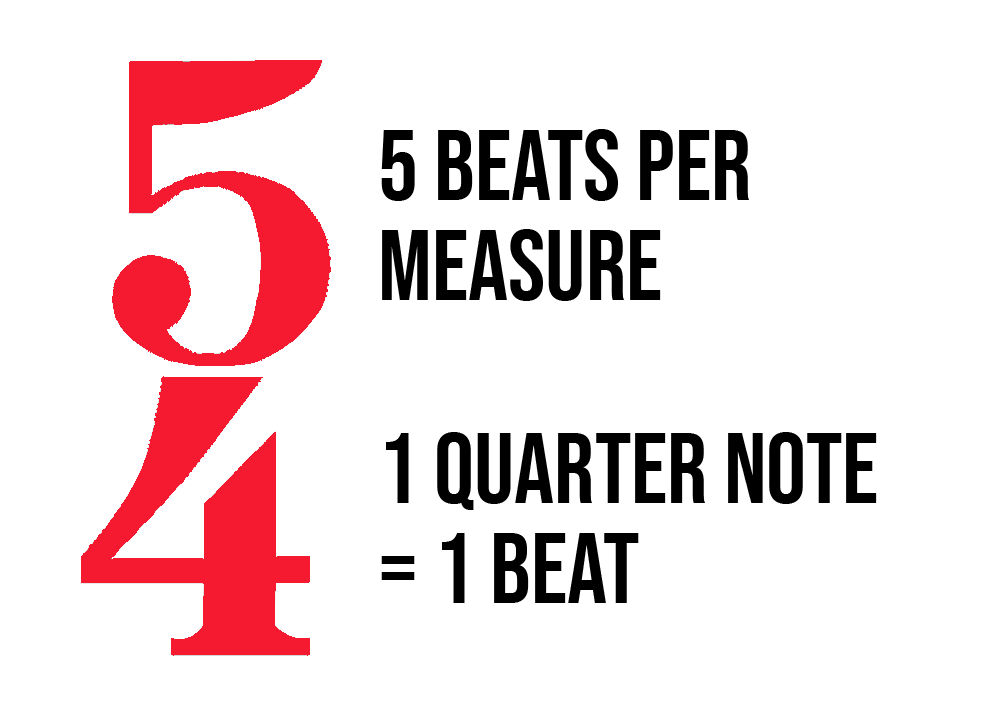
This is the most common odd time signature. In 5/4, there are five beats per measure and one quarter note counts as one beat.
You can count music in 5/4 like “1-2-3-4-5, 1-2-3-4-5.” But you can also group it into subdivisions. In Dave Brubeck’s “Take Five,” the beats are grouped as “1-2-3 1-2, 1-2-3 1-2.” Subdividing time signatures with large top numbers can make counting them easier.
The Mission Impossible theme is another famous example of 5/4 in action. This one has a long-long-short-short feel:
7 beats per measure, 1 quarter note = 1 beat
Song example: “Money” by Pink Floyd
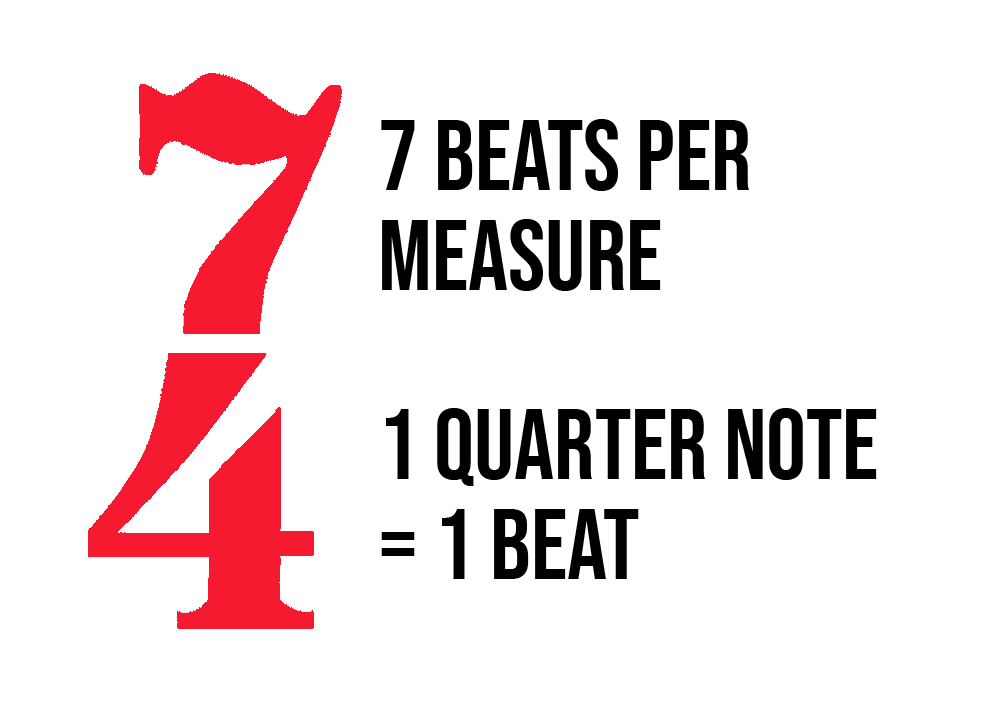
After 5/4, 7/4 is the most common odd time signature. We can count it as “1-2-3-4-5-6-7” or we can break it up into “1-2-3-4 1-2-3.” This is a rarer time signature, but you can hear its slightly disjointed feel in Pink Floyd’s “Money.”
6 beats per measure, 1 eighth note = 1 beat
Song example: “Falling” by Alicia Keys
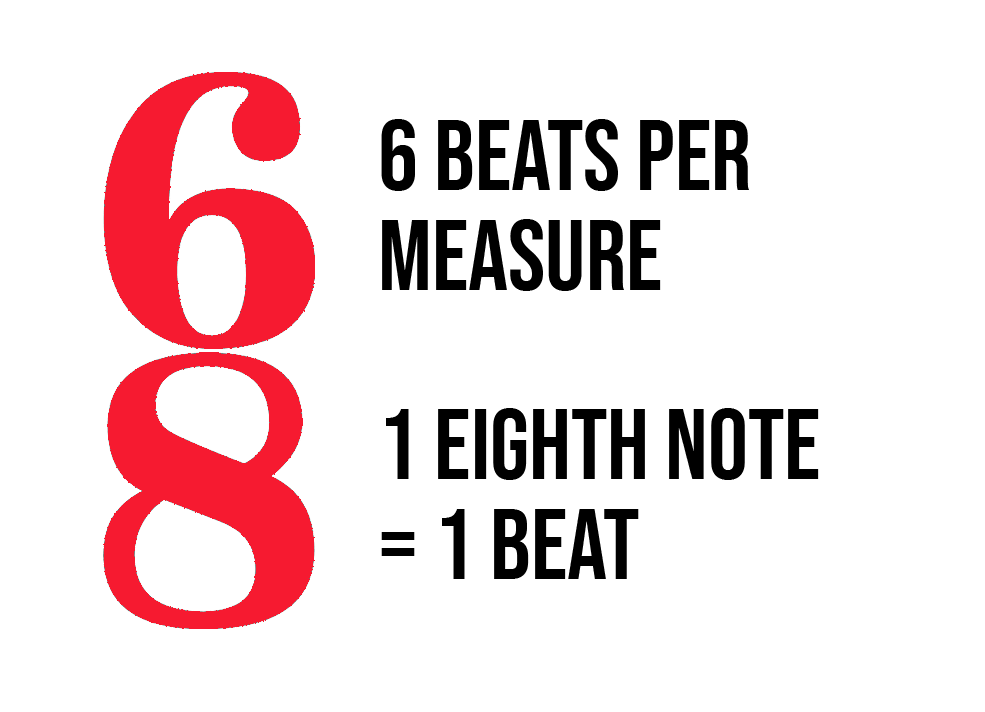
An 8 as the bottom number of a time signature means that an eighth note equals one beat. 6/8 is a common time signature and it gives a waltz feel similar to 3/4, only quicker.
If you play this time signature with your left hand accompanying, you may notice a tendency to emphasize the first and fourth beats. Sometimes, time signatures with 8 on the bottom create two “layers” of rhythm—a smaller division (1-2-3-4-5-6) and a larger division (1-2-3, 4-5-6).
9 beats per measure, 1 eighth note = 1 beat
Song examples: “I Hung My Head” by Sting (odd feel)
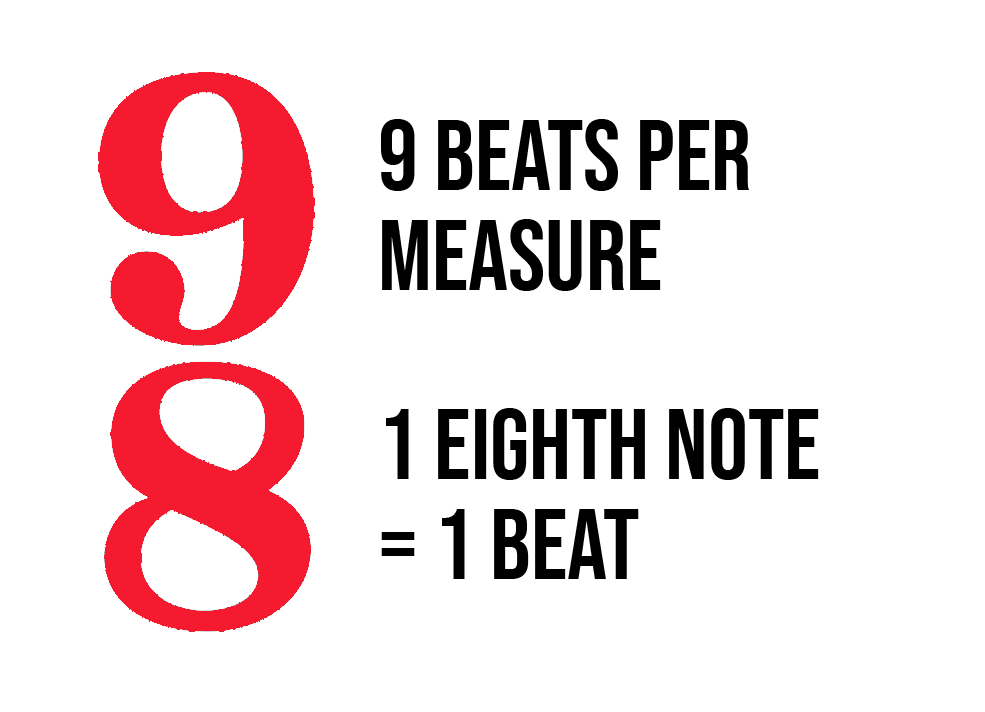
9/8 is an interesting time signature because it can be both odd and not! You can subdivide it like “1-2-3-4-5, 1-2-3-4,” which is how the meter works in Sting’s “I Hung My Head.” Or, you can subdivide it like “1-2-3, 1-2-3, 1-2-3” which makes it not an odd meter at all.
Again, when the top number is high, there’s a tendency to emphasize downbeats: 1-2-3, 1-2-3, 1-2-3.
15 beats per measure, 1 eighth note = 1 beat
Song examples: “Tubular Bells” by Mike Oldfield
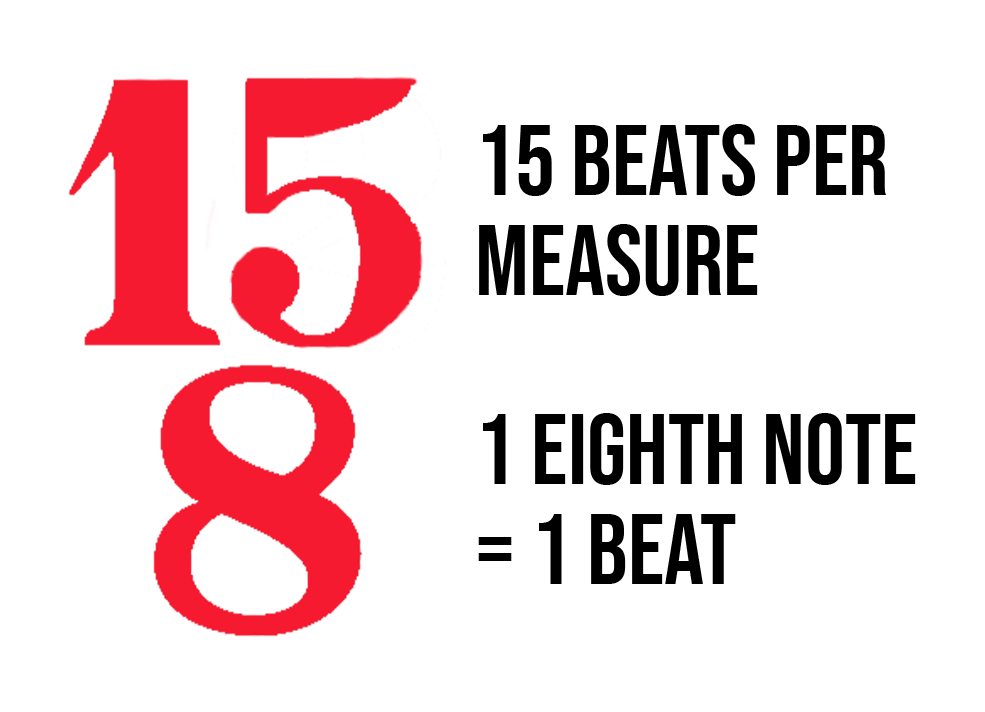
There are some unique time signatures out there with big numbers, 15/8 being one! An example of 15/8 you can listen to is “Tubular Bells” by Mike Oldfield, which groups the 15 beats into 7 and 8.
Time signatures aren’t always constant! Sometimes, they change in the middle of the song. For example, in “Lucy In the Sky With Diamonds” by the Beatles, the verse is in 3/4 time while the chorus is in 4/4. This gives different sections of the song a unique character.
We hope you enjoyed this introduction to time signatures! Here are more lessons about related topics:
Get real feedback from real experts…all from the comfort of your own home. Explore our Method and community for yourself with a free trial.
Pianote is the Ultimate Online Piano Lessons Experience™. Learn at your own pace, get expert lessons from real teachers and world-class pianists, and join a community of supportive piano players. Learn more about becoming a Member.
/marketing/pianote/promos/april/banner-bg-m.webp)
We use cookies for traffic data and advertising. Cookie Policy »
/marketing/pianote/promos/april/banner-title.webp)